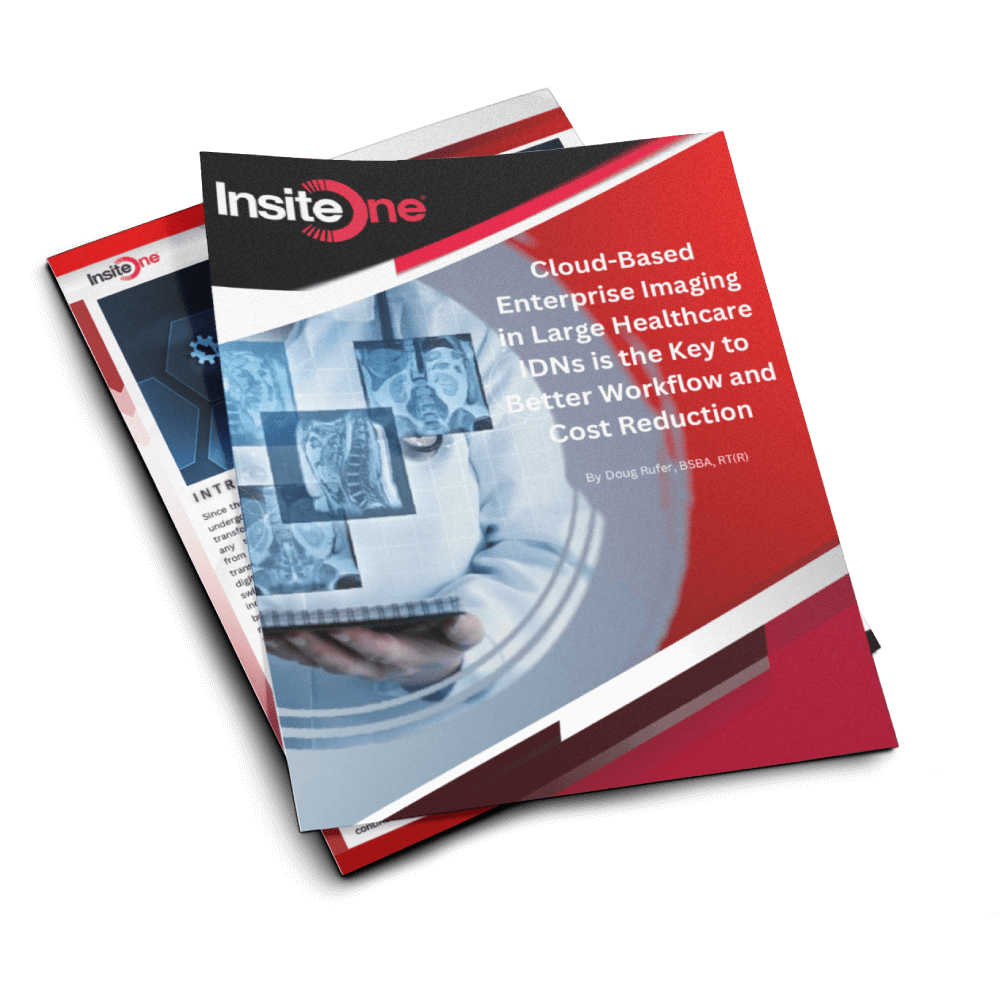From Chaos to Clarity: Reimagining Medical Imaging with a Teleradiology Future

The Problem: A Growing Gap in Access
Imaging demands continue to rise while challenges with staffing and skilled radiologists have become the norm. For hospital systems, imaging centers, and radiology groups, that gap means delayed reading, faster burnout, decreased job satisfaction, and constant revenue pressure. Once a luxury for larger health systems, teleradiology has emerged as a strategic capability to handle these pressures while providing better work/life balance for staff radiologists, improving continuity of care, access to subspecialty readers, and throughput improvements.
But not all teleradiology solutions are created equal. For some hospitals, the shift to outsourced reading raises a bigger question: why keep paying for a legacy PACS built for in-house radiology teams they no longer have?
Market Realities Every Radiology Director Should Own
Industry intelligence shows a teleradiology market in rapid expansion as organizations outsource or distribute reads to meet demand. Market reports point to double-digit CAGR in many segments and a clear shift toward cloud-first deployments.
Workforce constraints are tightening per-radiologist study volumes and staffing gaps are growing, creating chronic bottlenecks in many practices and rural hospitals. Teleradiology fills those gaps — but it must be performant, secure, and easy to integrate with local workflows. Additionally, AI is no longer a hypothetical technology. Now embedding itself into our everyday workflows, AI could further enhance workflow performance and, in many cases, improve, or help validate clinical observations.
Clinically validated algorithms now sit alongside readers to accelerate triage and routine measurements, which makes the case for platforms that can integrate, validate, and monitor AI tools in production. Furthermore, some applications can prioritize and route routine vs. problematic studies to the right radiologist at the right time, further improving workflow performance and more important, match the best skilled radiologist to the problem at hand. These types of services were rare just a few years ago but are now becoming mainstream, further fueling teleradiology’s growth.
Cybersecurity threats and ransomware increasingly target imaging systems. High-profile breaches and recent guidance from radiology societies highlight the need for immutable backups, tested disaster recovery capabilities, and robust incident response planning, with focus on education…after all, human error is responsible for 88% of all data breaches.
But an interesting dilemma is occurring in the market. As hospitals outsource more reads, many are left with high-cost, feature-heavy PACS solutions designed for in-house workflows they no longer need. This mismatch between clinical reality and constant infrastructure spend is pushing leaders to explore leaner, cloud-first replacements that maintain speed and security at a fraction of the cost while still providing the tools to offer elevated patient care and an exceptional viewing experience.
Operational Pain Points That Block Outcomes
Operational realities tend to repeat themselves in virtually any imaging organization. In fact, poll radiology directors and they will all point to relatively the same operational challenges:
- Unreliable access to prior studies when reading remotely, slowing interpretation and follow-up decisions.
- Fragmented systems (PACS, VNA, 3D analysis, cardiology, worklists, reporting, and AI) requiring manual handoffs, extra workstations, or custom integrations.
- Limited ability to scale during peaks or support off-site subspecialists without a heavy IT lift.
- Paying ongoing licensing and support fees for specialized workstations and on-premises hardware that is rarely being used. These systems also must be patched and supported routinely to prevent unauthorized access.
- Exposure to downtime and ransomware impact when imaging data sits on aging on-prem infrastructure.
Addressing these requires both modern architecture and pragmatic managed operations so clinical teams can focus on reading studies, not on system upkeep.
Why Modern Teleradiology Needs Cloud-Native PACS and VNA
About 70% of hospitals have implemented cloud technology to some degree. A cloud-native approach, such as those offered by companies like InsiteOne, are purpose-built to meet distributed workloads that teleradiology services demand. Cloud technology provides the foundation for teleradiology services to work effectively with:
- Fast image access across dispersed geographies
- Elastic and flexible storage for various needs of both short-term archive cache requirements and long-term image archiving needs
- Simple integration points for AI clinical and workflow tools, as well as AI based reporting
- Reduced on-site hardware requirements, eliminating IT burdens
- Centralized study routing and role-based access; limit exposure to only your site or provide access to multiple sites based on your workflow and patient access needs
- Streamlined collaboration among onsite and remote readers
- Integration to on-site EHRs ensuring seamless data flow of patient information and clinical reports
A modern PACS or teleradiology PACS architecture that provides an enterprise VNA further ensures studies are stored in vendor-neutral formats, enabling consistent retention policies, simplifying migrations (and possibly eliminating future migrations), and better interoperability with EHRs, AI vendors, and other external IT systems.
For hospitals relying entirely on teleradiology, a full-scale legacy PACS is often unnecessary as your needs have most likely changed. The priority becomes rapid, secure access to studies, not managing expensive workstation or on-premises servers. A right-sized, web-based cloud-native PACS configured as a hybrid deployment with local caching for emergency studies and fast image access regardless of internet connections, provides all the access clinicians need at a fraction of the cost. Add to that the ability to scale as your needs change in the future and you have a win-win situation. A final bonus? Enhanced security as cloud-based solutions typically provides a more robust security infrastructure than many hospital environments have implemented.
InsiteOne Provides a Winning Solution
InsiteOne is no stranger to cloud deployments. As one of the first cloud VNAs offered as a complete managed service from our beginning in 1999, our goal has been to provide highly secure, constant access to our customers’ data. Today, we manage over 40 billion images and continue to advance and deploy cloud-based services exclusively for healthcare. In fact, our most recent integration with Google Healthcare’s API is the most advanced integration available on the market today, eliminating middleware and providing faster access to your data. Consider the following benefits with our solutions:
Operational
- Single, cloud-native platform for reading, short-term, and long-term archiving: no fractured local archives, fewer VPN headaches, and consistent study access for remote readers.
- Right-sized architecture for teleradiology-first hospitals: eliminate unneeded on-premises infrastructure and workstation licensing while retaining rapid web-based access and hybrid local caching necessary in emergency care.
- Elastic scale: auto-scale storage during high-volume periods so service levels remain consistent without heavy capital expense.
- Subspecialty routing and smart worklists: ensure cases land with the right reader quickly, improving turnaround time and report quality.
Security & Resilience
- Immutable backups and geo-redundant architecture ensure images cannot be altered or encrypted by malware and can be restored from unaffected regions.
- Rapid failover architecture plus tested disaster recovery to reduce downtime impact on clinical operations.
- Managed service model removes the ops burden from hospital IT staff while preserving strict role-based access and audit trails.
AI and Interoperability
- Open APIs with streamlined connectors for AI and third-party tools enable quick addition of validated algorithms and industry leading AI platforms without bespoke engineering.
- Vendor-neutral storage and DICOM-first design make integration with EHRs, report engines, and external partners straightforward, critical for multi-site teleradiology programs.
- With a cost-effective VNA back-end architecture, store and access other “ologies” within you organization, further streamlining your storage silos from disparate systems.
From Overbuilt to Optimized
Consider the benefits a midsize health system could have with a new PACS model for their organization. One example workflow could be: routing overnight CT and neuro studies to a distributed team of on-call neuroradiologists through InsiteOne’s cloud-native PACS. An AI triage model flags suspected intracranial hemorrhage cases and prioritizes the study in a smart worklist to a reader specializing in intracranial bleeds. The reader opens the study in seconds, quickly creates and signs the report, and the VNA synchronizes the final study and reports to the hospital’s imaging archive and EHR, all while immutable backups protect the archive from external tampering and the images and reports are available in context to the patient’s clinical record within the EHR.
The health system avoids expensive hardware refresh cycles, replaces their legacy PACS with a web-native, hybrid platform, reduces after-hours turn-around-time by 40% or more, and retains the ability to bring reads back in-house in the future without starting over.
Security, Audits, and Compliance — The Differentiator
A teleradiology platform must be demonstrably resilient to protect the flow of data in and outside of the hospital environment. Data encryption at rest and in transit are just the beginning. InsiteOne recently completed our Type 2 SOC2 assessment; a testament to our priority to put data security as the highest priority. Additionally, capabilities like the following further help to protect your data and investment:
- Role-based access: strict separation of duties and least-privilege access for readers, technologists, and administrators.
- Comprehensive audit logs: immutable, searchable trails of who accessed what, when, and from where (essential for compliance and incident forensics).
- Business continuity: geo-redundant storage, immutable backups, and rapid failover reduce clinical disruption from cyber events. Radiology society guidance and recent white papers emphasize these controls as best practice.
What’s Next?
If you’re a radiology or IT director evaluating teleradiology options for your organization, ask yourself this: Are you overpaying for the PACS/Imaging solution you have today? If your needs have changed and you are contracting with outside teleradiology providers to handle reading your studies, most likely you do not need the heavy infrastructure of your current legacy PACS solution. In fact, it may even be more cost effective to switch than stay on your current platform altogether.
Contact InsiteOne for a quick operational assessment. We’ll review your current (and proposed future) radiology and teleradiology workflows, disaster recovery plans, and integration needs. From this assessment, we can provide you with a cost-effective, no obligation transition model to help you right-size, a cloud-native PACS solution that delivers everything you need, all without the cost of what you don’t need.
Find out if you are paying too much and let’s see if we can help you transition to a PACS that makes sense for today’s modern imaging demands.
For more information on how InsiteOne can provide a tailored solution to meet your organization’s Enterprise Image Archiving needs, contact us today at 866.467.4831or visit us here.




